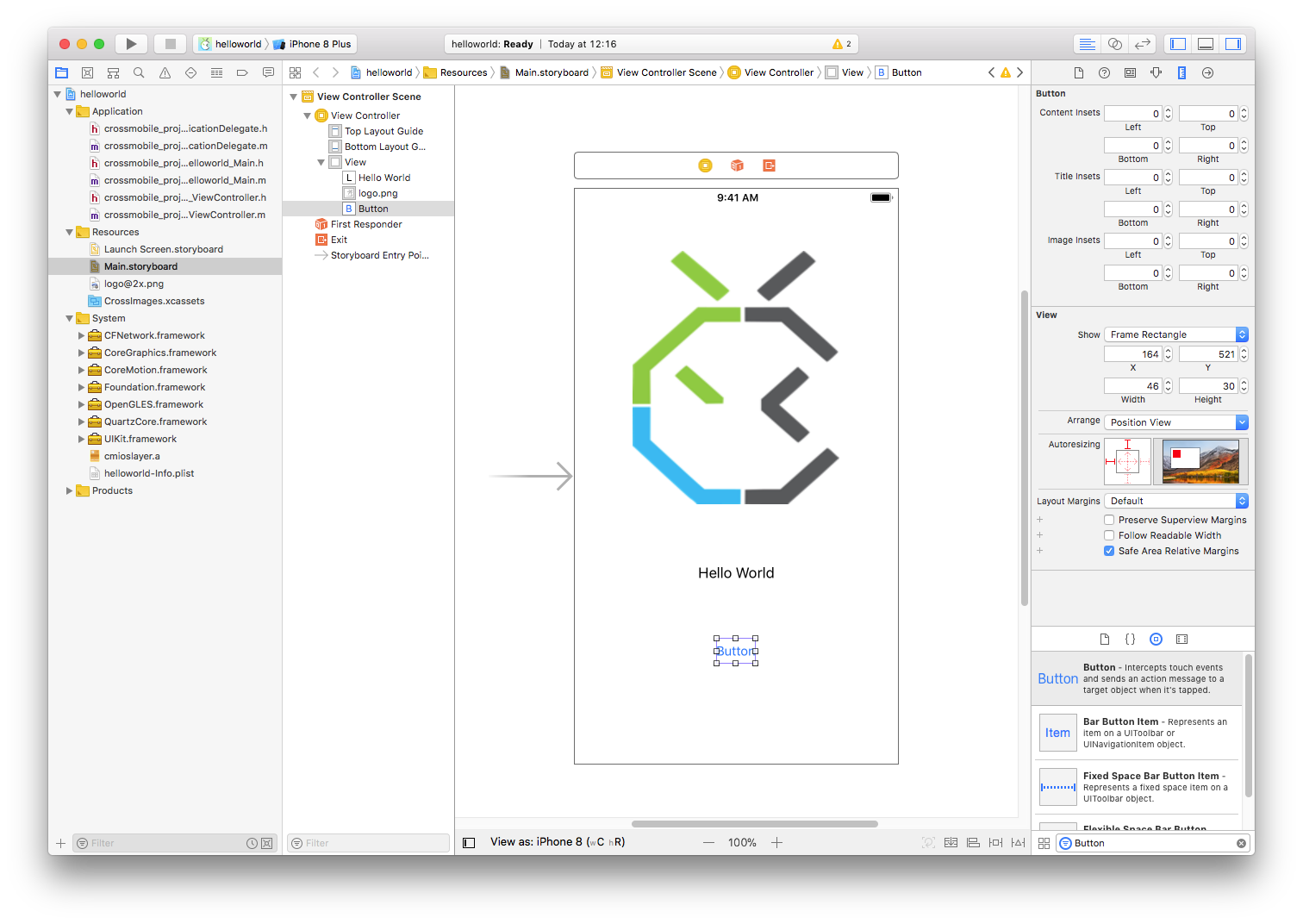

- #XCODE 12 STORYBOARD ADD BUTTON HOW TO#
- #XCODE 12 STORYBOARD ADD BUTTON CODE#
- #XCODE 12 STORYBOARD ADD BUTTON MAC#
Then, you can control-drag and link all of the other nine buttons to that one function. It’s really important that you set the type to UIButton instead of AnyObject for this one. We can actually connect multiple IBActions to the same function.įrom any of the number buttons, control-drag and create the function numberButtonPressed. zeroButtonPressed, oneButtonPressed, twoButtonPressed…. It would be pretty tragic if we had to make a unique function for all of these number buttons.

Now your View Controller should look like this: Name the function addButtonPressed and then press Connect.ĭo the same for subtractButtonPressed, multiplyButtonPressed, divideButtonPressed, equalsButtonPressed, and clearButtonPressed. You’ll also want to change the type from AnyObject to UIButton using the dropdown. This time, though, we have to change the connection from an Outlet to an Action. We can connect functions just like we control-drag to connect variables. For a detailed explanation of the key words and what that exclamation mark is doing, read Part 5 Bonus: Explaining enough, this resultLabel is the only IBOutlet we need to make for now. The only parts that really matter for us is the name ( resultLabel) and the type ( UILabel). Now you should have a reference to the label.ĭon’t worry about what everything on that line means. In the popup, name the variable resultLabel and then press Connect. Except this time, we’re establishing a connection between Storyboard and Code.Ĭontrol-drag from the UILabel above the buttons into the ViewController class (in-between the brackets. Just like we set up those relative constraints, we can do a control-drag to forge a relationship.

To access an object on the storyboard as a variable in the ViewController class, we need to connect it as an IBOutlet. Connecting Storyboard objects as variables The Inspector is something that gets used fairly often so it’s a good idea to have it open. This is the setup I tend to prefer, with the File Browser (left sidebar) and the Storyboard’s View Hierarchy closed. (You can also close the View Hierarchy with a similar looking button at the bottom-right corner of the storyboard canvas.) Close any number of them until you have enough space to work comfortably. Right next to the Counterparts button, there’s another set of buttons that control the left and right sidebars. Again, Xcode has buttons to do exactly what we need. We’re gonna have to close some of these sidebars so we can actually see our content.
#XCODE 12 STORYBOARD ADD BUTTON MAC#
Now you probably see something entirely unhelpful like this:Īnother caveat about Xcode is that it’s more designed for a 27” iMac than a 13” Mac Book Pro. Mouse over to Manual, and then navigate all the way to Main.storyboard (base). Unfortunately for us, the set up for opening things in this side pane isn’t quite as intuitive as it could be.Ĭlick the word Counterparts (or whatever the left-most item is): Click that button.Īfter clicking the Counterparts button, the item that showed up in the new content pane is almost certainly not the Storyboard file. The center button is called Counterparts, and it lets you set up Xcode to show two different panes of content at the same time. These three buttons sit at the top right of the window. It makes it really simple to split-screen two files at once.
#XCODE 12 STORYBOARD ADD BUTTON CODE#
Even before that, we have to make it so we can see both the storyboard and the code at the same time. To actually write code that interacts with out interface, we have to connect items on screen to counterparts in code. Open that file in the file viewer in the left-most pane of the window. In this case, we have the default ViewController.swift. Every View Controller should also have a corresponding. In our storyboard, we have a View Controller. There are great resources out there for learning Swift if you need a crash course or a refresher. I just won’t be explaining the nitty gritty details.
#XCODE 12 STORYBOARD ADD BUTTON HOW TO#
The rest of this tutorial assumes you know how to program but doesn’t actually require any experience. It’s been laid out, designed, and constrained to work on all screen sizes.īut for all this work, it doesn’t actually do anything yet. In the past three parts, we laboriously created the interface for our calculator.


 0 kommentar(er)
0 kommentar(er)
